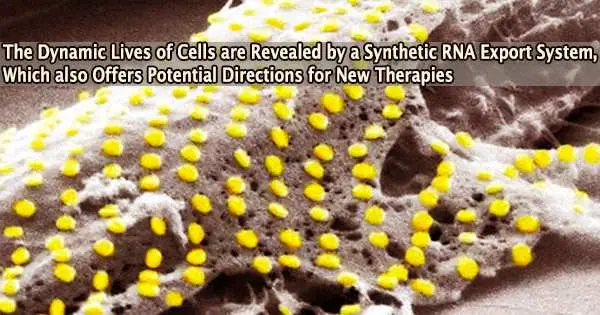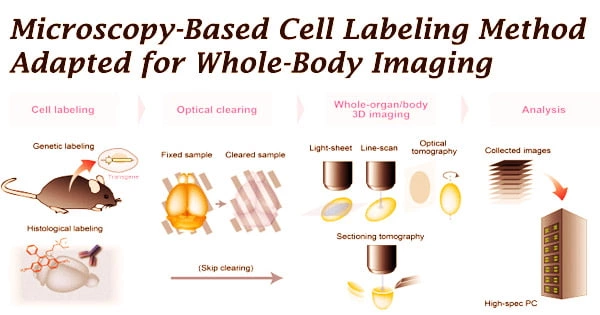In disorders like inflammation and cancer, as well as throughout the development of the embryo and as people age, cells alter dynamically over time. Some populations grow while others shrink. Without harming the cells being seen, it would be possible to monitor these changes over time and get valuable insights into a variety of processes.
RNA molecules, which act as the blueprints for the proteins a cell needs to carry out its numerous tasks, can provide precise hints about what is happening inside of cells. However, the most advanced tools now available for surveying RNA necessitate destroying the cell by rupturing it open in order to gather and examine all of the molecules inside.
This means that researchers can only capture a snapshot of the state of the cell the instant before it died rather than being able to watch how it develops and changes over time.
While “reading” the RNA in a cell is an effective technique to learn about biological processes, “writing” the RNA in a cell is a potent tool for changing cellular behavior and thereby treating disease. For example, several vaccines for COVID-19 work by delivering messenger RNA (mRNA) into a cell and thus inducing the production of antibodies against the virus. Diverse disorders may benefit from using RNA, but getting it into the correct cells has proven difficult.
Researchers at Caltech have now created a single system that takes on both the “reading” and “writing” RNA difficulties. The new approach offers a new way to track a variety of cellular processes, from embryonic development to cancer, by enabling scientists to monitor the RNA in cells over time without harming them.
Surprisingly, the same method also makes it possible to teach cells to carry RNA to other cells, opening the door to the possibility of specifically manipulating cellular behaviour and thus enabling novel therapeutic approaches.
“There are many processes in biology where we want to know how cells change over time,” says postdoctoral scholar Felix Horns, the study’s first author. “For example, during development, the embryo develops into many different tissues by changing cellular states. Numerous diseases like cancer are processes that unfold over time, and, of course, aging also occurs through changes over time as well.”
Living cells could, in principle, operate as programmable mRNA delivery vehicles that bring therapeutic mRNA to the right cells in the right places in the body. To achieve that vision, we need a way to export specific mRNAs in a format that can be taken up and expressed by other cells. That is what this system provides. COURIER allows one cell to produce mRNA and then encapsulate it in particles that deliver it to other cells, which then express it.
Professor Michael Elowitz
“RNA plays the central role of telling the cell what to do,” Horns adds. “If we can measure the RNA that a cell is expressing, that allows us to read what it’s doing. Additionally, as we’ve all seen in the last few years in the form of RNA vaccines, we can put instructions into a cell and program what it does by delivering mRNA.”
“The amazing thing is that the same molecular device our RNA export system addresses the two seemingly independent challenges of readout and control,” says Michael Elowitz, professor of biology and bioengineering and Howard Hughes Medical Institute Investigator.
The research was conducted primarily in the Elowitz laboratory and is a collaboration with the laboratories of two additional Caltech faculty: Pamela Bjorkman, the David Baltimore Professor of Biology and Biological Engineering and Merkin Institute Professor; and Carlos Lois, research professor of biology. A paper describing the study appeared in the journal Cell.
The new system, dubbed COURIER (Controlled Output and Uptake of RNA for Interrogation, Expression, and Regulation), enables RNA export from cells. With COURIER, one can genetically engineer a cell to package some of its own RNA in little self-assembling protein containers and then “ship” (or secrete) it out in a membrane-bound vesicle.
To package a particular sort of RNA that represents a disease hallmark or a specific “cellular identification card” to identify the cell being studied, for instance, researchers may program the boxes. As an alternative, they could configure the boxes to include a sample of all the RNA that is present in a cell, providing a picture of the cell’s activity in general.
In either case, the tiny bundles of RNA depart from the cell, allowing scientists to gather and examine data regarding the inner workings of the cell without disturbing it. In this way, researchers can use COURIER and exported RNA to track how populations of cells change over time during dynamic processes such as cancer or embryonic development.
The second category of applications for COURIER is in delivering therapeutics. After being exported from the cell, the protein container can dock with another cell and deliver RNA into it.
That cell can then express proteins encoded by the RNA, which can be designed for a variety of functions: editing the genome, changing the state of the cell, or killing it if it is in a diseased state.
Currently, mRNA vaccines for COVID-19 operate similarly, delivering mRNA that encode for fragments of the SARS-CoV-2 virus and subsequently inducing the production of antibodies. mRNA delivery could allow for a range of different types of medicines in addition to vaccines. However, a key challenge has been how to deliver mRNA to the relevant cell types.
“Living cells could, in principle, operate as programmable mRNA delivery vehicles that bring therapeutic mRNA to the right cells in the right places in the body,” says Elowitz. “To achieve that vision, we need a way to export specific mRNAs in a format that can be taken up and expressed by other cells. That is what this system provides. COURIER allows one cell to produce mRNA and then encapsulate it in particles that deliver it to other cells, which then express it.”
















